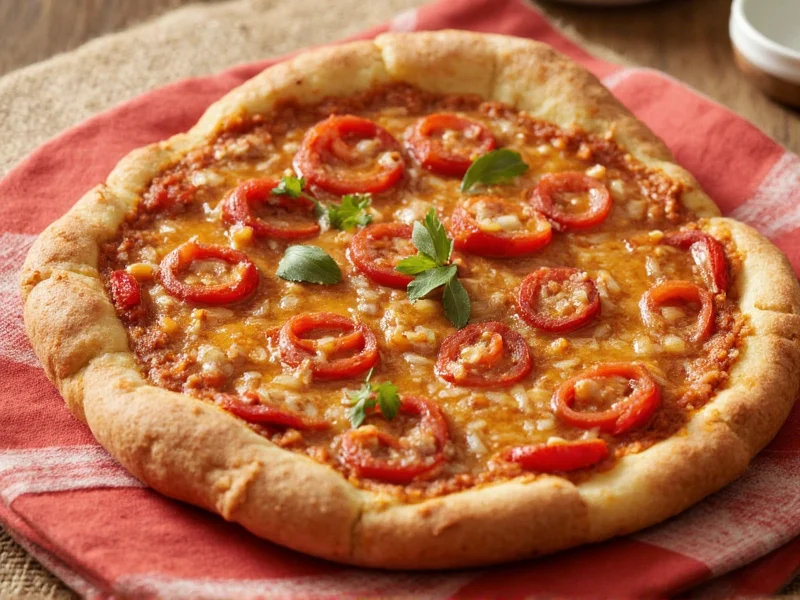Understanding the subtle yet significant differences between soffritto and sofrito is essential for authentic cooking across Mediterranean and Latin American cuisines. Though these terms describe the same foundational cooking technique—sautéing aromatic vegetables to build flavor—their ingredient compositions and culinary applications vary by region, reflecting centuries of cultural evolution.
Linguistic Origins and Cultural Context
The term soffritto comes directly from Italian, meaning “under-fried,” referring to the gentle sautéing process that develops flavors without browning. This technique forms the base of countless Italian dishes like risotto, ragù, and minestrone. In contrast, sofrito derives from Spanish (sofreír = “to lightly fry”) and represents a similar concept adapted across Spain, Latin America, and the Caribbean, where ingredients and applications differ significantly from the Italian version.
Core Ingredient Comparison
While both preparations serve as flavor foundations, their ingredient profiles reveal distinct culinary identities:
| Preparation | Traditional Ingredients | Oil/Fat Used | Texture |
|---|---|---|---|
| Italian Soffritto | Onion, celery, carrots (1:1:1 ratio) | Olive oil or butter | Fine dice, fully softened |
| Spanish Sofrito | Onion, garlic, tomatoes | Olive oil | Finely chopped, reduced to paste |
| Latin American Sofrito | Onion, garlic, peppers, cilantro, culantro | Oil | Blended or finely minced |
Regional Variations Explained
Italian soffritto maintains remarkable consistency across Italy, with the classic soffritto classico using equal parts onion, celery, and carrots finely diced. Northern regions sometimes substitute butter for olive oil, while coastal areas might add a pinch of anchovy for umami depth. This preparation remains relatively uniform because it serves as the essential starting point for most Italian sauces and soups.
Spanish sofrito shows more variation within Spain itself. In Catalonia, it often includes tomatoes and sometimes even paprika, creating a richer base for dishes like paella. The Valencian version might incorporate rabbit or chicken stock directly into the sofrito. Unlike Italian soffritto, Spanish sofrito typically cooks longer until the tomatoes reduce to a thick paste that concentrates flavors.
Latin American sofrito demonstrates the most dramatic regional differences. Puerto Rican sofrito features culantro and ají dulce peppers, while Cuban versions emphasize garlic and might include cumin. Dominican sofrito often contains tomato sauce and vinegar, creating a tangier profile. These variations reflect indigenous, African, and European influences that transformed the original Spanish technique.
Practical Cooking Applications
Understanding when to use each preparation elevates your cooking authenticity:
- Use Italian soffritto when preparing risotto, osso buco, or any Italian sauce where a subtle, sweet vegetable base is required without competing flavors
- Choose Spanish sofrito for paella, fabada asturiana, or any Spanish dish requiring that characteristic tomato-infused foundation
- Opt for Latin American sofrito when making mofongo, ropa vieja, or Caribbean stews where bold, herbaceous notes define the dish
Chefs often make the mistake of substituting one for the other without considering how ingredient differences affect final flavor profiles. The carrots in Italian soffritto add natural sweetness that balances acidity in tomato sauces, while the tomatoes in Spanish sofrito provide that acidity upfront. Latin American versions with culantro and peppers create an entirely different aromatic profile unsuitable for traditional Italian dishes.
Common Misconceptions Clarified
Many home cooks believe soffritto and sofrito are completely interchangeable terms. In reality, while they represent the same culinary concept, their specific applications remain culturally distinct. Another frequent error involves ingredient substitutions—using tomatoes in Italian soffritto (which traditionally contains no tomatoes) fundamentally changes the flavor profile.
The confusion intensifies because some Italian-American communities use “sofrito” to describe their version of the technique, blending linguistic traditions. However, in authentic regional cooking, the distinction matters. Professional chefs understand that using the correct base preparation honors the dish's cultural origins and delivers authentic flavor.
Mastering the Technique
Regardless of which version you prepare, perfecting the technique requires attention to detail:
- Proper knife work: Finely and uniformly diced vegetables ensure even cooking
- Correct heat level: Medium-low heat prevents browning while allowing flavors to meld
- Patience: Italian soffritto needs 10-15 minutes; Spanish sofrito may require 20-30 minutes to reduce tomatoes properly
- Seasoning timing: Add salt early to draw out vegetable moisture and prevent burning
Freezing portions of prepared soffritto or sofrito in ice cube trays provides convenient flavor bases for weeknight cooking while maintaining authenticity. Many professional kitchens prepare large batches of these foundations to ensure consistency across dishes.
Can I substitute sofrito for soffritto in Italian recipes?
While possible in a pinch, substitution isn't recommended for authentic results. Italian soffritto's carrot content provides natural sweetness that balances acidity, while Spanish sofrito's tomato base introduces acidity early. For closest results, omit tomatoes from sofrito when substituting in Italian dishes.
Why does Italian soffritto include carrots while Spanish versions don't?
The Italian tradition of including carrots (forming the 'soffritto trinity') dates to Renaissance cooking, where the natural sugars in carrots balanced acidic tomatoes. Spanish cuisine developed separately, with tomatoes incorporated later and used more liberally as a primary ingredient rather than for subtle sweetness.
What's the ideal oil for authentic soffritto?
Northern Italian recipes traditionally use butter for soffritto, while central and southern regions prefer olive oil. Spanish sofrito almost exclusively uses extra virgin olive oil, which contributes to its distinctive flavor profile. The fat choice significantly impacts the final dish's character.
How long can prepared soffritto be stored?
Fresh soffritto keeps for 3-4 days refrigerated in an airtight container. For longer storage, freeze portions in ice cube trays then transfer to freezer bags—properly frozen soffritto maintains quality for 3-4 months. Thaw overnight in the refrigerator before use.
Does sofrito always contain tomatoes?
Not always. While Spanish sofrito typically includes tomatoes, many Latin American variations (like Puerto Rican sofrito) omit tomatoes entirely, focusing instead on onions, garlic, peppers, and herbs. The defining characteristic is the aromatic vegetable base, not specific ingredients.











 浙公网安备
33010002000092号
浙公网安备
33010002000092号 浙B2-20120091-4
浙B2-20120091-4